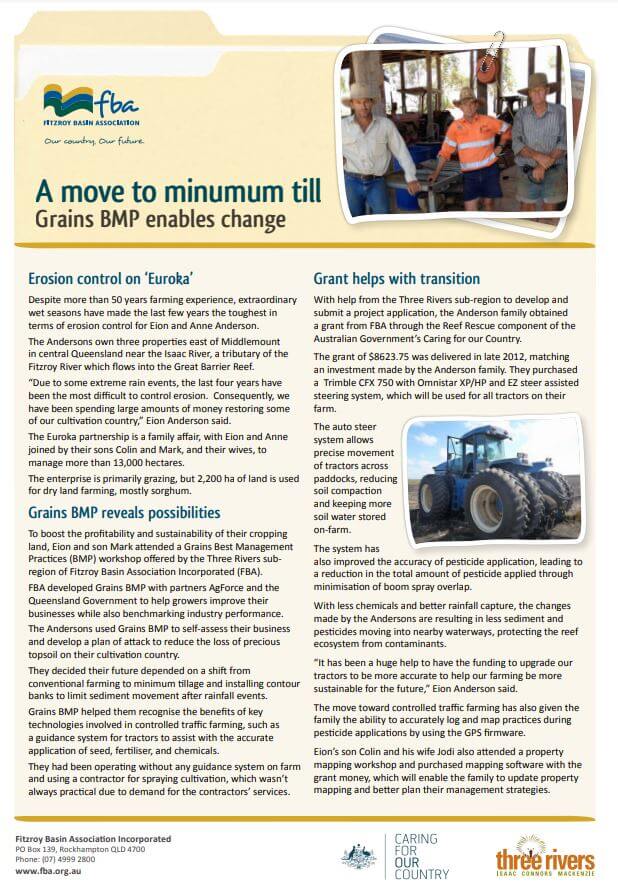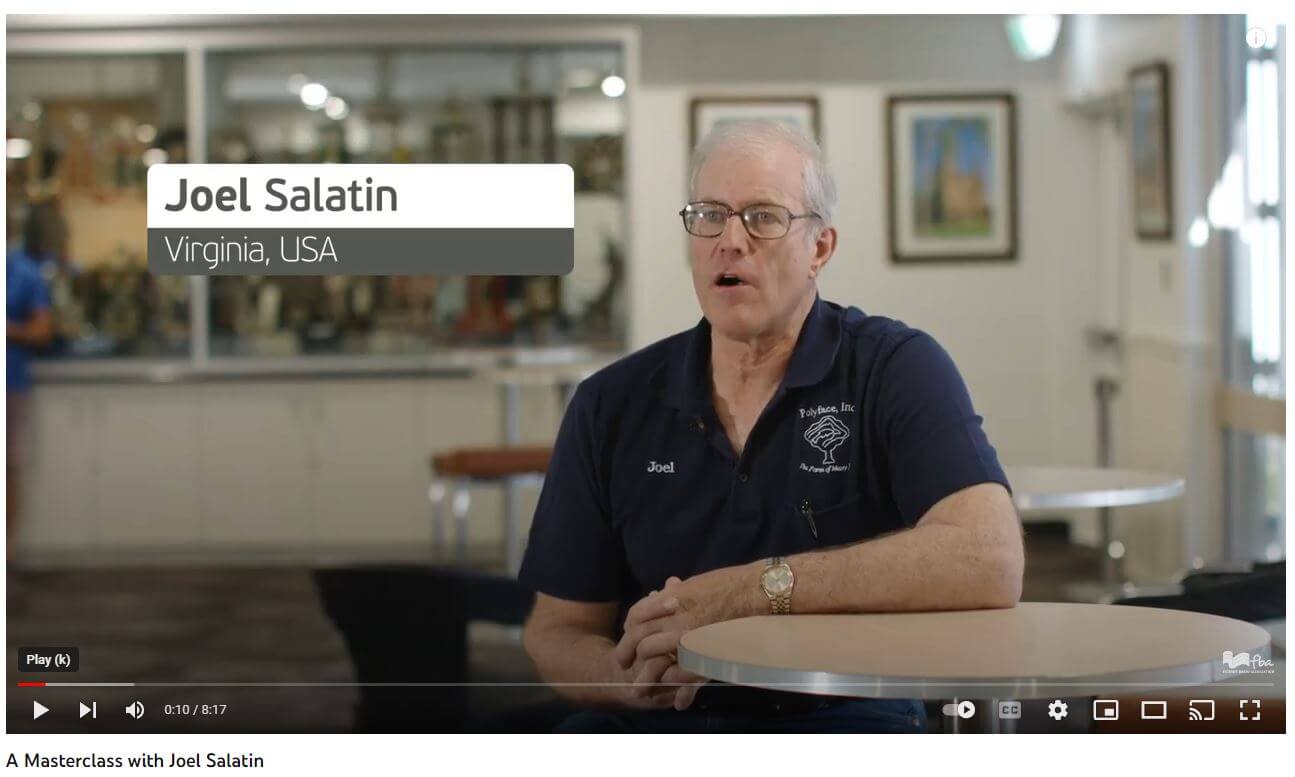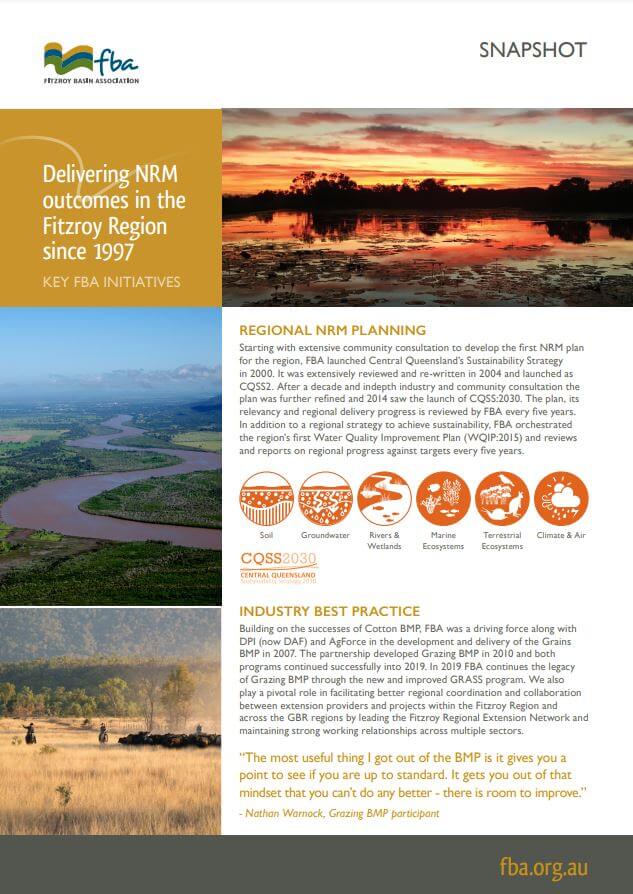Resources library - Case Studies & Snapshots
Case Studies & Snapshots Resources
Improving land management makes long-term sense
Improving land management makes long-term sense

The annual rainfall at Brian and Judy Pownall’s property Leichhardt, located roughly 25 kilometres east of Dysart, is just 600 mm. However, a month after installing new contour banks in their cultivation areas, they received almost all their annual rainfall in just 10 days. Despite the deluge, the new contour banks held, proving their value and ensuring valuable soil and moisture was not washed away into the local creek after the downpour.
Growing better Halting run-off in horticulture
Growing better Halting run-off in horticulture

Rainy weather in CQ in the last few years has been a boon for local wetlands, and the fish, birds and other wildlife that rely on them. One local grower is helping protect local natural beauty by reducing run-off from his property.
Wetland case study
Fitzroy coastal floodplain case study

This case study was created by the Department of Environment and Resource Management Aquatic Ecosystem Health Science Integration and Capacity Building Team as part of the Queensland Wetlands Program. The purpose of this conceptual modelling case study is to synthesise and present information on the values of the Fitzroy estuarine floodplain wetland pools. In particular, the study examines how physical and biological connectivity across the Fitzroy delta landscape drives the ecological functioning of the wetland pools.
A Masterclass with Joel Salatin
A Masterclass with Joel Salatin

In early 2018 we ran two, two-day events with the internationally renowned regenerative farmer, Joel Salatin. Salatin, a household name in agriculture, operates Polyface Farm, a renowned multi-species, multi-pasture grass based enterprise in Virginia, USA. Termed ‘beyond organic’, Polyfaces Farm boasts an operation so environmentally friendly and productive, it claims to mitigate global warming while averaging 400 cow days per acre. This video captures event highlights and a chat with Joel.
Horticulture case study
Horticulture - Applying lessons learnt across industries

For seed sweet potato grower Eric Coleman, applying lessons learnt from grain growers has allowed him to improve his profitability by reducing his need for herbicides while also decreasing the amount of run-off generated by his farm.
Cane toad challenge community grants Greening Australia
Cane toad challenge

The CQ Cane Toad challenge is a challenge for landholders and community members in Gladstone, Rockhampton and Yeppoon to go out and collect adult canetoads and tadpoles so that native species can thrive. 50 people have signed up for the program so far! This Greening Australia project is one of six successful community grants applications and is supported by Fitzroy Basin Association Inc. through funding from the Australian Government's National Landcare Programme and supports the research of UQ's Institute for Molecular Bioscience.
Improving run-off
Restoring flooded cotton farm

Arcturus Downs, located near Springsure, is one of many cotton farms in the Fitzroy Basin that sustained significant damage to its fields and infrastructure through wet season flooding in recent years.
Wetland case study
Kinka Wetlands case study

This Pilot Program project at Kinka Swamp was so successful that the area has been gazetted as a Reserve for Beach Protection and Coastal Management, with Rockhampton Regional Council (formerly Livingstone Shire Council) as trustee. The project involved restoration of fish passage to 57 hectares of wetland by constructing two fishways at strategic locations, as well as improving access for recreational purposes. The environmental value of the site was promoted through education and an interpretive sign









